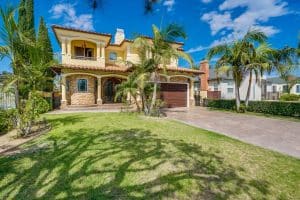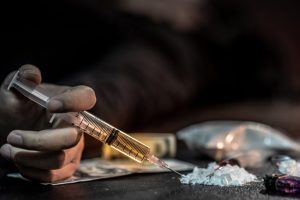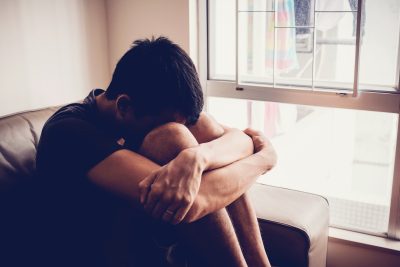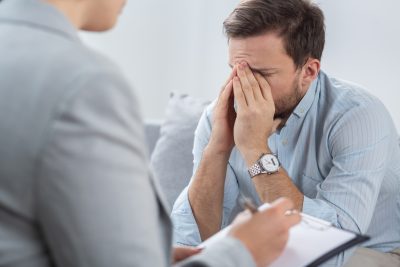Sober Living Resources for Washington
Washington—not to be confused with Washington, D.C.—is a state in the U.S. Pacific Northwest region. This state borders the Pacific Ocean to the east, Oregon to the south, and British Columbia to the north. It is the 42nd state to be admitted to the U.S., and it is also the nation’s 18th largest and 13th most populous state. The majority of Washington residents live in the Seattle metropolitan area, which is a major hub for culture, business, and industry. The rest of the state consists of beautiful natural terrain, including temperate rainforests, mountain ranges, and a semi-arid basin.
Washington is known for being one of the wealthiest states in the country, with a high life expectancy and extremely low unemployment. This socially liberal state was one of the first to legalize same-sex marriage, recreational cannabis, abortions on request, and physician-assisted suicide. Washington is also known for its many institutions of higher education, which include Seattle University, the University of Washington, Evergreen State College, and Saint Martin’s University. As a result of all of these factors, countless young people flock to Washington each year.
Washington’s population has, however, been devastated by the opioid epidemic, as well as other substance use disorders. The state’s proximity to Canada makes it an ideal distribution hub for drug distributors and other illicit organizations. The state’s youthful population and college towns are particularly vulnerable to addiction. Moreover, the state’s progressive culture, which resulted in the legalization of recreational marijuana, has also contributed to a significant drug culture.
Individuals who suffer from addiction in Washington often find their lives falling apart. Addiction is a condition that tends to get progressively worse over time, damaging personal health, ruining relationships, causing unemployment, and shattering entire families and communities. The greatest risk, however, is fatal overdose. Due to the influx of synthetic opioids, overdose deaths in Washington are on the rise. 63% of overdose deaths in the state involve opioids. Traditional drugs of abuse, including alcohol and crystal meth, remain significant sources of addiction in Washington as well.
If you or a loved one suffers from a substance use disorder, it is crucial to get help as soon as possible. Fortunately, Washington residents have many options available for pursuing addiction recovery. Sober living houses inside and outside of Washington provide individuals with opportunities to become drug and alcohol-free and develop new lives for themselves in sobriety.
What Are Sober Living Homes?
Sober living homes are an essential part of many recovery plans. They are homes where residents agree from the outset to stay clean and sober. As such, sober living homes offer alcohol and drug-free environments to individuals in early recovery. Sober living staff also enforce several rules to ensure that residents can live in a space where they will not be triggered by needless exposure to substance abuse.
A person’s environment is a crucial aspect of addiction recovery. During early sobriety, most people are especially vulnerable to triggers. Triggers can be various. They most commonly involve being directly exposed to a person abusing drugs and alcohol – or to the presence of those substances. Individuals in early recovery can also be triggered by emotional upheavals, certain locations associated with drug or alcohol abuse, and even specific people with whom they used to drink. By providing a safe and trigger-free environment, sober living homes dramatically decrease the likelihood that a person will be exposed to these triggers.
Sober living homes also protect against relapse by providing residents with a strong sober social support system. Addictions can be lonely, but being around other people with shared experiences can be encouraging. Housemates are prepared to offer advice, feedback, and emotional support. Friends in recovery also are a significant source of increased accountability. Beyond the pragmatic requirements of addiction recovery, sober friendships can provide joy, meaning, and fulfillment for years. Research shows that the peer support systems people develop in sober livings increase their chances of remaining sober many years after they have left their sober living houses.
Ultimately, quality sober living homes aim not only to help residents maintain their physical sobriety — they work to ensure that each resident develops a fulfilling sober life. This means that they provide support as residents acquire jobs, repair relationships, begin academic degree programs, and deal with underlying legal and financial issues. Whether one pursues recovery in a Washington sober living or a Los Angeles sober living home, the goal isn’t merely physical abstinence — it’s learning to embrace life without having to depend on drugs or alcohol.
Sober Fun in Washington
It is often recommended that individuals with substance use disorders in Washington State move elsewhere during the initial period of their early recovery. People in early recovery are particularly vulnerable to the effects of triggers, and it can help to have an entirely fresh start, away from people and locations associated with past habits. Once a person has developed a strong set of coping skills and confidence in sobriety, it will be possible to return home and confront these potential triggers with limited risk to oneself.
However, individuals who return home to Washington after recovering are often left wondering: “Is it possible to have fun while sober in Washington State?” The answer to this question is a resounding yes. The term “sober fun” might sound like an impossible fantasy, but in reality, it is very possible for individuals who have the right coping skills and a dependable group of sober friends. Sober living homes make sober fun possible. Activities and attractions that appeal to sober people in Washington State include:
Olympic National Park
Olympic National Park, which covers most of the Olympic Peninsula, contains both ocean beaches and glaciered mountaintops. This national park contains every aspect of Washington State’s beautiful natural bounty. It offers countless hiking trails, waterfalls, and campgrounds for sightseers and adventurers alike.
San Juan Islands
The San Juan Islands are perhaps the most recognizable among Washington’s many islands. The four largest can easily be reached by ferry. These islands have many activities for visitors, from delicious seafood restaurants to art galleries, and even parks. Outdoorsy people can engage in sea kayaking, whale watching, or hike in San Juan Island National Historic Park.
Seattle Center
Perhaps the most iconic location in Seattle is the Space Needle, located in the middle of the Seattle Center. The Seattle Center was built in 1962 for the World’s Fair. This 74-acre campus includes many other landmarks aside from the Space Needle, including the Monorail, museums, restaurants, and parklands. Many visitors enjoy the Museum of Pop Culture, designed by Frank Gehry, as well as the glass artworks on display at Chihuly Garden and Glass.
Downtown Seattle
Seattle is an enormous and extremely dense city; in fact, most of the state’s population lives in the Seattle Metropolitan Area. So it may come as some surprise that Downtown Seattle has a somewhat laid-back vibe. Pike Place Market is home to many eateries, as well as historic buildings. Benaroya Hall and Pioneer Square are also popular destinations for tourists here. The waterfront area of Downtown is also fascinating, featuring the Olympic Sculpture Park as well as the Seattle Aquarium.
Leavenworth
This town refers to itself as a Bavarian Village. Developed during the logging industry boom, the town of Leavenworth revamped itself after the industry flagged. Today, residents take pride in their heritage: many walk around wearing lederhosen or blowing morning serenades on alphorns. Tourists are drawn here for the unique vibe as well as the many outdoor recreation activities, which include hiking, apple picking, and the State Apple Blossom Festival.
Puget Sound
Puget Sound is located on the western border of Washington State. This region separates the Olympic Peninsula and Seattle, and it contains countless inlets, islands, and an extensive ferry system. As such, Puget Sound is a popular destination for island hopping and day trips for Washington residents and visitors alike. Activities here include whale watching, kayaking, and hiking. It also has a fascinating history; for anyone interested in the indigenous cultures that once called Puget Sound home, Tillicum Village is worth checking out.
Mount St. Helens National Volcanic Monument
Yes, this is a volcano. In fact, it last erupted fairly recently: in 1980. This event caused the peak to reduce by more than 1000 feet, and it leveled much of the area surrounding the peak, taking 150 square miles of forest with it. A visit to Mount St. Helens is awe-inspiring since this enormous volcano is still active. Checking out the devastation is humbling. Visitors also have plenty of opportunities to learn about the geological processes happening underground to this day.
Spokane
Spokane is located in Eastern Washington, which is distinct from the coastal areas both in terms of its landscape and its culture. The population is far more sparse, but the beauty is undeniable. Spokane was the venue for the World’s Fair of 1974, and it features countless museums, gardens, parks, an enormous Ferris wheel, and a hand-carved carousel built-in 1909. Oh, and for the adventurous among us — Mount Spokane is a popular skiing destination.
Benefits of Sober Living Homes
Sober living homes offer many perks to individuals in early recovery. First of all, they allow residents to stay for as long as they need. Sober living staff recognize that addictions are never cured overnight. In fact, they can not be “cured” in any legitimate sense. Nonetheless, people who take the time to develop new skills and rebuild their lives can learn to be free from the compulsions and negative consequences of addiction. Sober living homes provide long-term support throughout this process, no matter how long it takes. Some of the many benefits of sober livings include:
Easy Transitions
When an individual graduates from an acute treatment program, such as an inpatient rehab, they are often advised to move into a sober living home. Yes, they may have managed to get sober at their treatment center, but it is still necessary to develop a sober life. Jumping back into one’s old life too abruptly can easily trigger a relapse. Sober living homes provide treatment center graduates with a supportive transitional period where they can slowly develop the skills, habits, and structures they need to begin leading fulfilling lives in sobriety. In fact, research shows that taking part in further recovery programs after rehab significantly lowers the likelihood of relapse.
On-Site Staff
Sober living staff and house managers frequently live on-site. As such, they are available both night and day to help meet residents’ needs and enforce house rules. Sober living home residents are never unsupervised. Moreover, staff members have often been through the recovery process themselves, so they can be excellent sources of emotional support and guidance.
Peer Support
Addiction is filled with loneliness and conflict; some even call it a disease of loneliness or disease of despair. Living with other people who suffer from addiction can be radically healing for residents; they finally have the chance to talk to people who fully understand, and they realize they’re not alone. Housemates work to keep each other accountable and stay committed to the recovery process. People with longer-term sobriety can be mentors to newer house residents. Perhaps most critically, these relationships tend to last long after they have left the house — and they make it possible for sober life to be fun and exciting.
New Life Skills
During active addiction, it is common for young people to neglect themselves and their lives. For this reason, people in early recovery often discover, much to their chagrin, that they lack basic life skills that most people their age take for granted. Skills like writing a resume, passing a job interview, or even taking care of personal hygiene, might seem complicated and overwhelming. Sober living homes offer skill workshops and support residents as they tackle the challenges of early recovery. By the time residents graduate, they will have the skills and abilities they need to live autonomously and independently — and they will know when to ask for help as well!
Is A Washington Sober Living Home Right For Me?
Washington State is home to many high-quality sober living homes, but individuals who experienced active addiction in Washington are often advised to attend sober living homes elsewhere. This is because the purpose of a sober living home is to remove individuals from their old lives. By moving elsewhere to get sober, it becomes far easier to develop new habits, create new relationships, and gain a fresh lease on life.
Many choose to make a fresh start in Southern California, which is only a day’s drive away from Washington. California is home to a thriving recovery community, with 12-step meetings at all hours of the day, and countless activities and attractions for sober fun. More importantly, it is also the birthplace of structured sober livings, a type of sober living home that offers significantly more resources, support, and structure than most sober living houses.
Addiction Recovery at Design for Recovery
For Washington residents interested in making a fresh start in Southern California, Design for Recovery is the clear choice. This structured sober living home is centrally located near the beach as well as city centers. It is a men’s sober living home where young men can work together to gain the skills and coping tools they need to get sober and, more importantly, stay sober. While building relationships, healing past damage, and making strides to the future, residents of Design for Recovery not only work to achieve sobriety — they aim for joyful, free, and fulfilling sober lives.
At Design for Recovery, we firmly believe that recovering from addiction is a multifaceted process. Physical abstinence is the foundation, but recovery involves far more. We support young men as they begin new careers, enroll in college, and work hard to achieve their goals. We believe that strong values, including honesty, integrity, and accountability, form the backbone of successful addiction recovery. Our community, like any family, continues to support housemates long after they have moved into their own apartments and homes. The commitment of our alumni network speaks to the fact that Design for Recovery is more than a mere place to fix oneself up — it offers a way of life and a path toward a better tomorrow.
If you are ready for a new way of life, contact us today. Reach out to Design for Recovery for a free and confidential consultation. It is never too late for a fresh start.


















